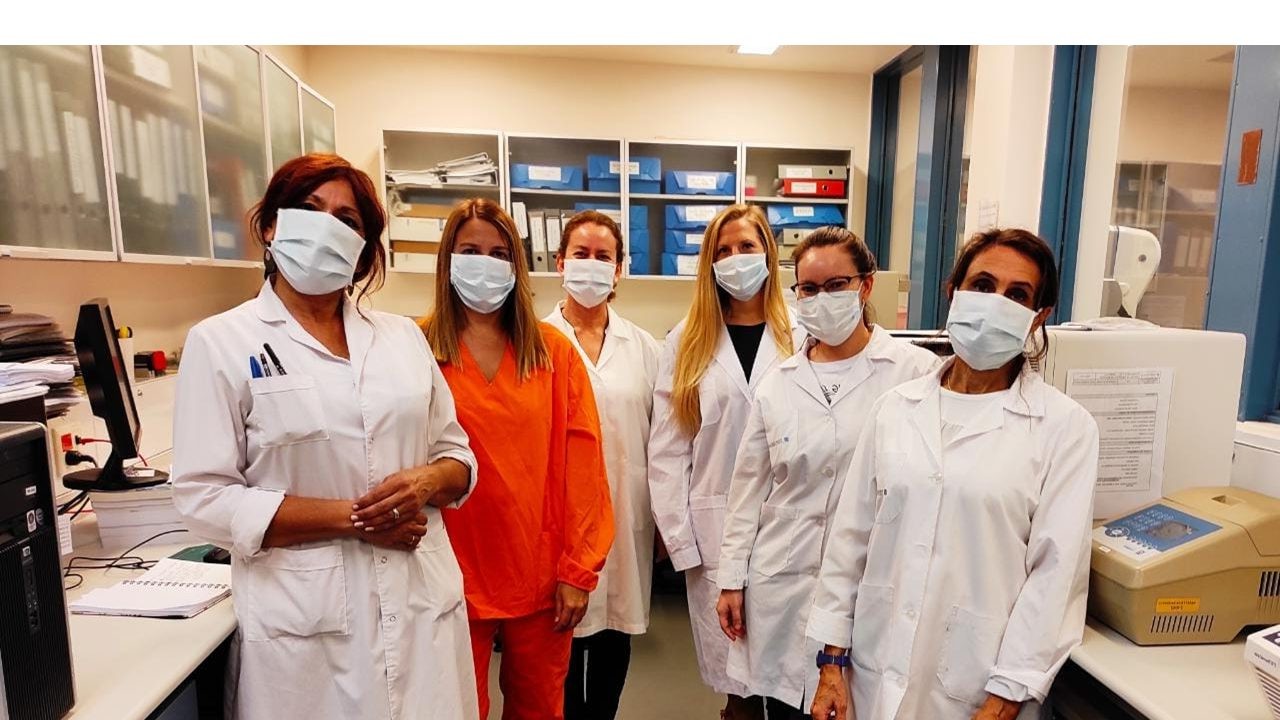


11 February 2021, Buenos Aires (Argentina) – “When I grow up, I want to work in a lab”, said little Ana to her parents in San Carlos Centro, a small town in Argentina. But even if as a child Ana had pictured herself growing up to work in a laboratory, she would have never imagined that she would someday be leading one.
Ana worked hard to achieve her goals. While in veterinary school, she quickly became a chemistry and microbiology teaching assistant, and once she graduated she started on a national and international career path dedicated to the field of laboratory science. After years of hard work, this pathway led her to the top of the SENASA (National Agri‐Food Health and Quality Service) veterinary laboratory, where she was the director when COVID-19 disrupted our world in 2020.
Amidst the uncertainty and despair experienced at the beginning of the pandemic, Ana rapidly mobilised her team to step up in the fight against the virus. Her experience in managing animal health crises had taught her the value of an early response – a pillar of disease control. “As veterinarians, we are also health professionals,” highlighted Ana. “I was sure that we were well-prepared in terms of technical capacities and infrastructure to collaborate with the public health sector.”
Thanks to the relationship built over the years with the national Ministry of Health, SENASA’s laboratory was swiftly incorporated in the national network for COVID-19 diagnosis. For this purpose, the technical team led by Ana participated in a dedicated training and the lab was visited by the Minister of Health of the Province of Buenos Aires, the national Minister of Agriculture, and the SENASA authorities who approved the facilities to process human samples.
SENASA’s laboratory supported the rollout of the national vigilance plan known as ‘Detectar’ (to detect). As part of this plan, Ana’s team processed samples coming from semi-closed establishments, such as nursing homes, to early detect cases in at-risk populations. “The timely detection of infected people makes it possible to rapidly implement protective measures that can stop the spread of the virus,” explained Ana.
New experiences bring new challenges too. To be able to process human samples for the first time, her team worked hard to adopt the needed protocols as well as to shape logistics aspects. The latter turned out to be critical to ensure the continuity of their regular laboratory services provided to the veterinary sector. Maintaining their efforts on the diagnosis of animal diseases was essential to reduce their devastating consequences on the socio-economic and sanitary crisis.
Today, the whole team recounts the experience as rewarding, and recognizes their key role in setting a national and global precedent of One Health collaboration in action.
As SENASA in Argentina, many other veterinary laboratories globally have contributed to mitigate the impacts of the pandemic. Ana’s story, as many others, highlights the critical role played by women working in laboratories, who became protagonists at different stages of the fight against COVID-19. According to data collected by the World Organisation for Animal Health (OIE), more than half of staff working in vet labs are women.
Yet, in some countries, their workplaces are facing challenges to meet critical requirements.
The OIE, with the support of Global Affairs Canada, is leading the Sustainable Laboratories Project to ensure that laboratories are safe and secure. The project will also raise awareness on gender and leadership as a way to achieve this. Providing equal opportunity to leadership positions can help leverage our full potential and address the enormous challenges posed by the lack of sustainability in laboratories.
This way, a future generation of young girls can grow up imagining themselves working in labs, but also leading them.
More Information:
– OIE factsheet on the Sustainable Labs project
[1] In a cohort of 14 countries, 103 labs with 2100 employees reported in the OIE PVS Sustainable Laboratories dataset (collected 2012-2019).
In the picture below: Mariana Herrera, Maria Isabel Mosse, Paula Bonastre, Caterina Marta, Ana Maria Alvarez, Jessica Babich, Maria Angeles Pondé, Maria Carolina Artuso, Ana Maria Nicola
